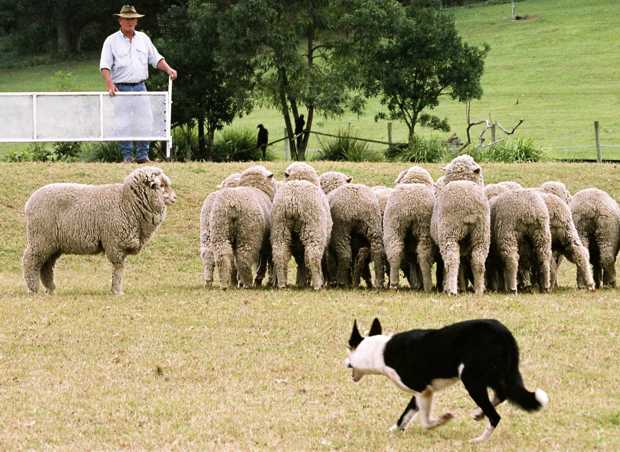
If you’ve ever been to farmlands and kept your eyes opened, you might have noticed not only how beautiful the simple life can be, but also how there’s no better illustration for the phrase “man’s best friend” than a shepherd and his sheepdog. The two are linked together by an ancestral bondage, one that transcended mere friendship – both man and dog depend on each other to make ends meet and put food on the table/bowl. How exactly one man and canine are able to herd whole flocks of mindless sheep over a hundred strong has always been boggling and more or less taken for granted. A new study sheds light on the matter. The result: in the future sheep might be guided by robot herders. Heck, why not?
The math of sheep herding
Researchers at Swansea University, UK and Uppsala University in Sweden built a mathematical model that explains how one single sheepdog can round up herds made of up to 100 sheep. Their conclusion suggests that the dog needs only to follow two simple mathematical rules. One causes a sheepdog to close any gaps it sees between dispersing sheep – in fact this is sort of where the key lies; the dog doesn’t see the sheep per se. The dog doesn’t distinguish the fluffy white balls in front of him as individual sheep and what it notices are only the gaps that form in an otherwise white sea. The other rule results in sheep being driven forward once the gaps are sufficiently closed.
To reach this conclusion, the researchers fitted one dog and 46 sheep with a highly sensitive GPS device. They then fed the data in a computer simulation to devise the model that would explain what prompts the dog to move and how the animal responds.
Lead researcher Dr Andrew King, from Swansea University, said: “If you watch sheepdogs rounding up sheep, the dog weaves back and forth behind the flock in exactly the way that we see in the model.
“We had to think about what the dog could see to develop our model. It basically sees white, fluffy things in front of it. If the dog sees gaps between the sheep, or the gaps are getting bigger, the dog needs to bring them together.”
Colleague Daniel Strombom, a mathematician from Uppsala University in Sweden, added: “At every time step in the model, the dog decides if the herd is cohesive enough or not. If not cohesive, it will make it cohesive, but if it’s already cohesive the dog will push the herd towards the target. Other models don’t appear to be able to herd really big groups – as soon as the number of individuals gets above 50 you start needing multiple shepherds or sheepdogs.”
So, how does society benefit from an efficient herding algorithm? Well, the obvious benefit is that engineers can now build robot sheep dog, which doesn’t sound like that much of an appealing prospect. C’mon, sheepdogs are awesome! A more immediate application would be for, again, robots. Mechanized swarms are becoming smarter and numerous by the year and mitigating their navigation pattern as efficiently as possible is a crucial prerequisite. Humans sometimes need herding, too. When coupled together by the hundreds or thousands, masses of people are no different from flocks of sheep in many respects, so authorities might want to use these findings for better crowd control.
The findings were reported in the Journal of the Royal Society Interface.






